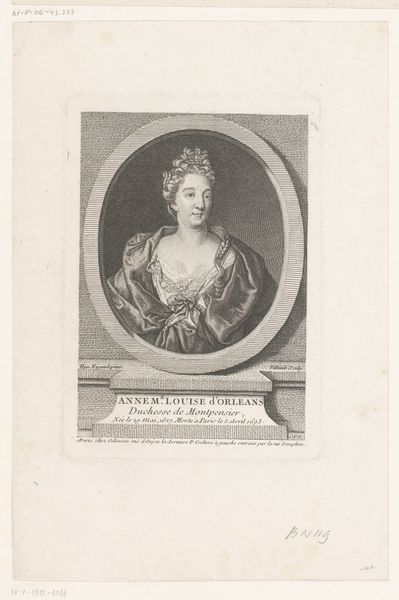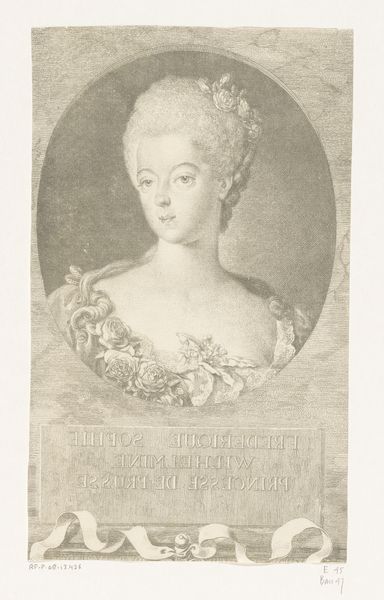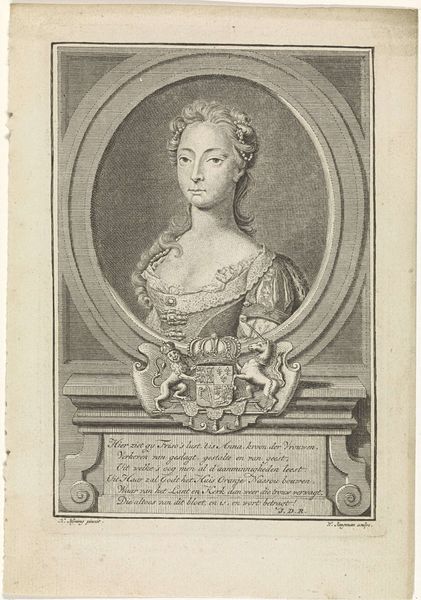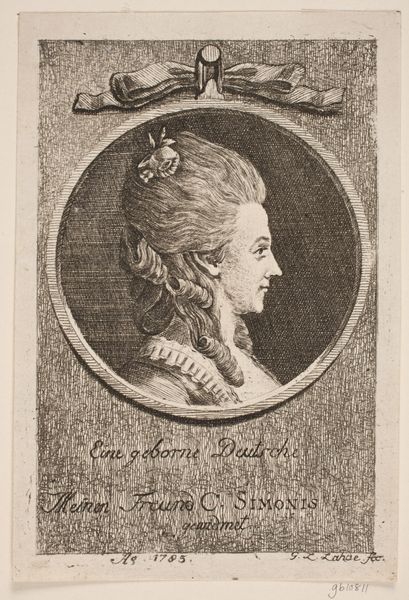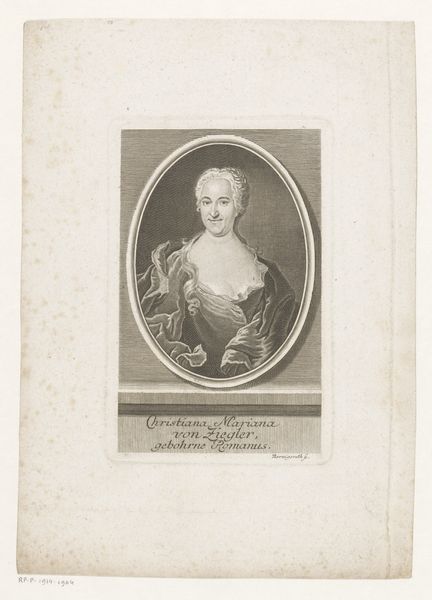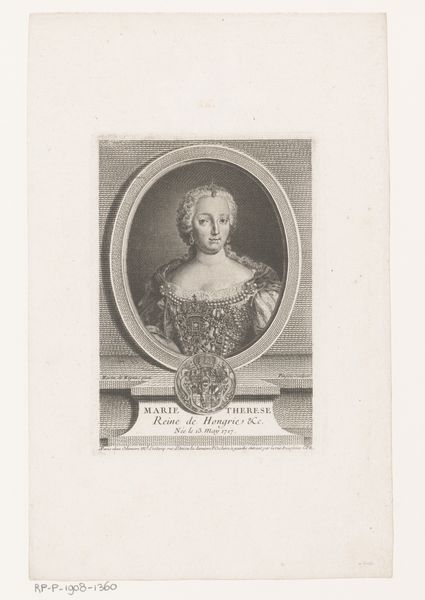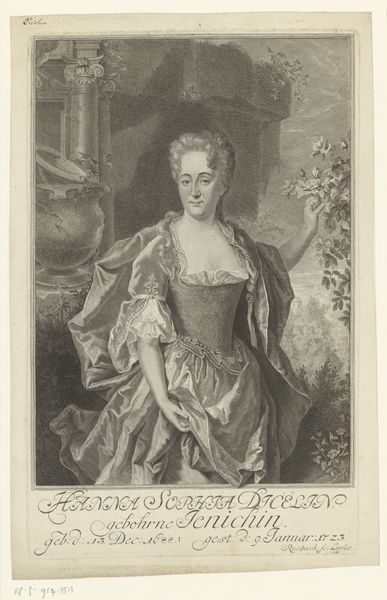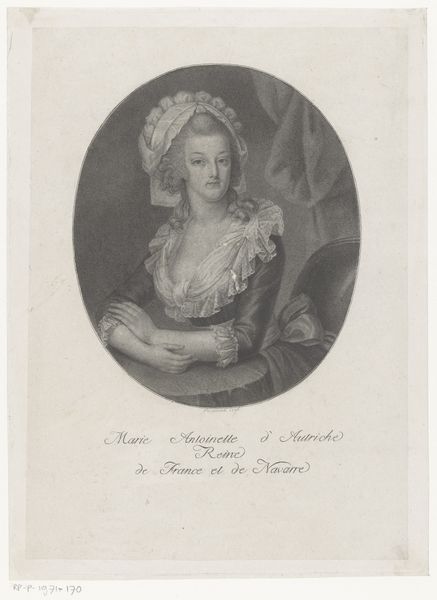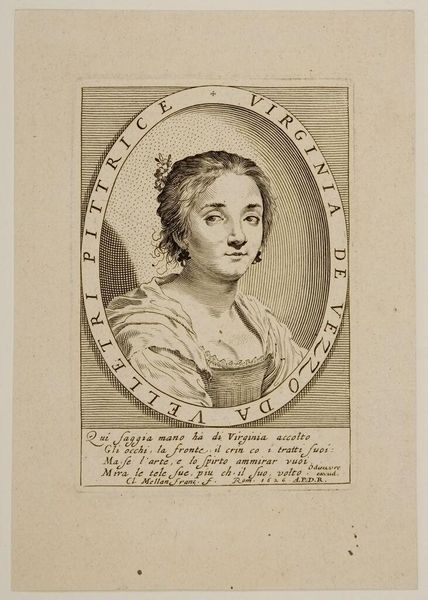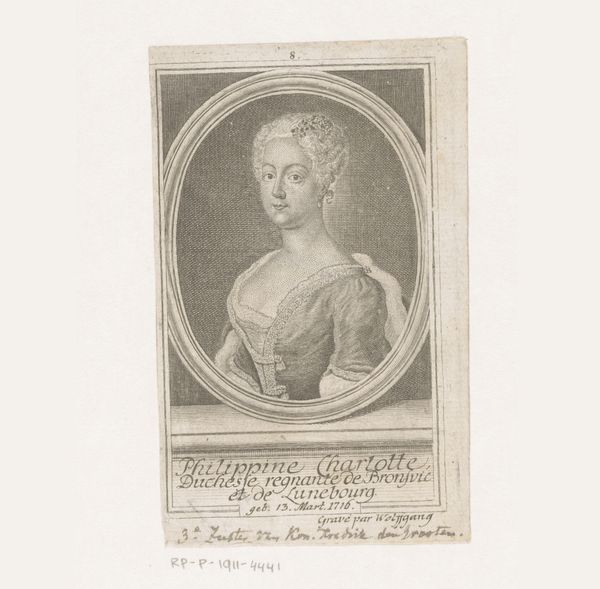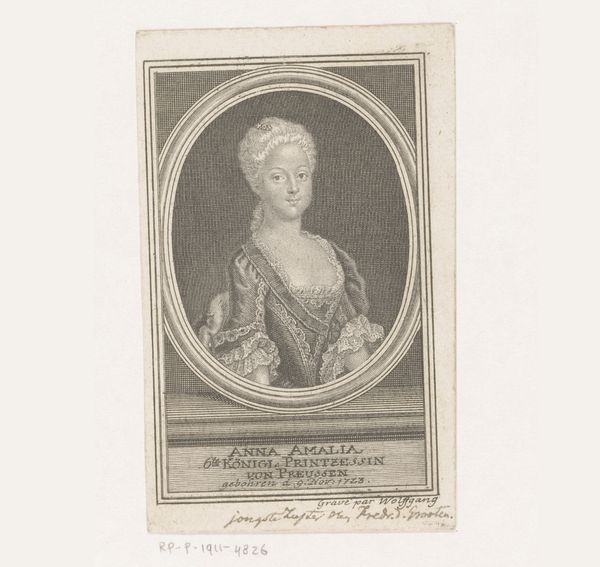
Portrait of Madame de Pompadour (Madame Le Normant d'Estiolles) 1764
0:00
0:00
drawing, print, engraving
#
portrait
#
drawing
# print
#
engraving
#
rococo
Dimensions: sheet: 7 3/4 x 5 3/8 in. (19.7 x 13.6 cm)
Copyright: Public Domain
Editor: So this is Augustin de Saint-Aubin's 1764 engraving, "Portrait of Madame de Pompadour." It's interesting to see her depicted in profile, somehow, I find it surprisingly intimate. What catches your eye about it? Curator: As a materialist, I see more than just a portrait. The engraving process itself speaks volumes. Consider the labor involved in creating this print – the meticulous carving into the metal plate, the production of multiple copies allowing for wider circulation and, thus, a broader dissemination of Madame de Pompadour's image and influence. Editor: So, it's not just about the artwork's aesthetic qualities? Curator: Not at all. We must also examine the materials. What kind of paper was used? Where did it come from? Who produced it? These are questions that connect the image to a vast network of production, trade, and consumption that defined 18th-century France. Furthermore, the print medium itself challenges the notion of the unique art object, democratizing access to images of the elite, even while reinforcing social hierarchies. Editor: That’s a fascinating perspective! I hadn't really considered the impact of the printing process itself. Does the social context then alter the artwork's artistic merit? Curator: I think challenging boundaries like “artistic merit” is the exact kind of perspective we should be using. For example, look at the poem included in the engraving. By exploring authorship and reception of text we can come to see it's construction and context! Editor: That is true; I can see this approach adds many layers to the piece! Thanks for the lesson! Curator: Absolutely! By delving into the materials and their modes of production, we can understand not only the artwork, but the society that produced it.
Comments
No comments
Be the first to comment and join the conversation on the ultimate creative platform.
